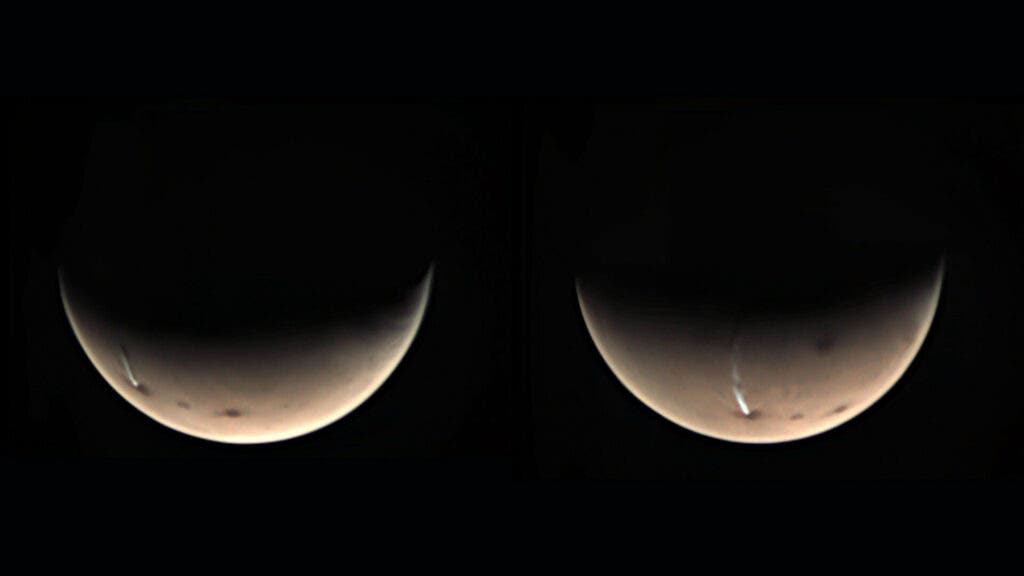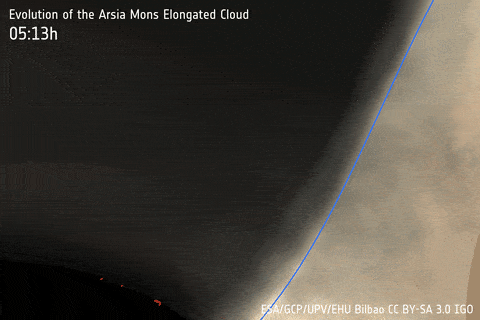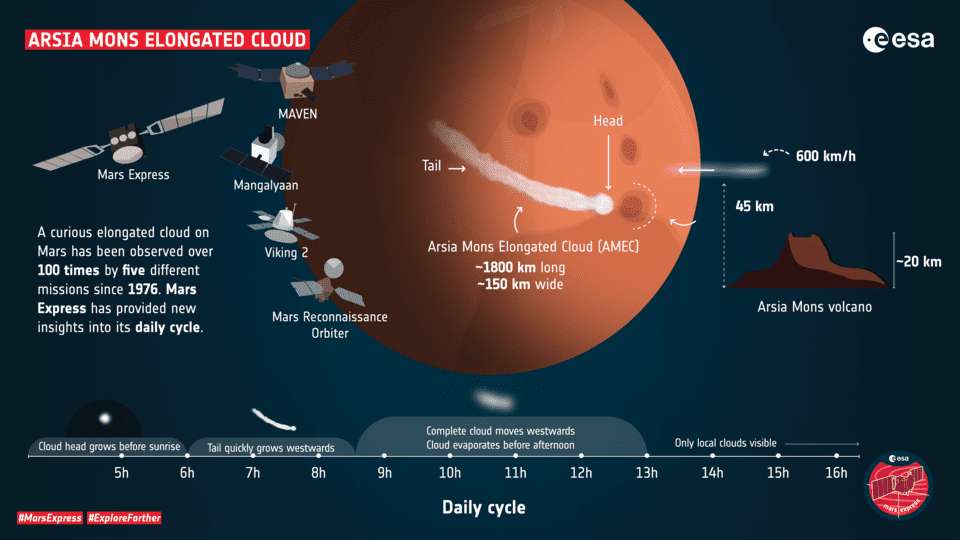
Every year around Mars’ southern solstice, a strange elongated ice cloud forms over the red planet’s surface. The exact nature of this peculiar meteorological phenomenon has been elusive — until recently.
Scientists affiliated with the European Space Agency (ESA) just released a stunning photo of the giant 1,100-mile-long (1,800 km) cloud captured by the Visual Monitoring Camera (VMC) on the Mars Express spacecraft. In doing so, they’ve also figured out how it forms.
Unlocking the secrets of a most curious cloud
The tubular cloud forms and fades daily for about 80 days or so of a Martian year — which lasts about 687 Earth days — stretching from the Arsia Mons volcano to Olympus Mons, which just happens to be the tallest mountain in the solar system.
You might think that the clouds are the result of volcanic eruptions, given the proximity to volcanoes. However, Mars isn’t volcanically active anymore.
That being said, the volcanoes are indeed responsible for forming the elongated Martian cloud, but not in the way you likely imagine.

ESA researchers operating the Mars Express orbiter recorded the cloud in unprecedented detail using the VMC, cheekily nicknamed ‘Mars Webcam’ (it actually only has the resolution of a webcam from the early 2000s), to understand this transient in the cloud.
Originally, VMC was only installed in order to confirm that the Beagle 2 lander had touched down successfully when it separated from Marx Express in 2003. It was subsequently switched off not long after. It was relatively recently that it was reclassified as a camera for science.
“Although it has a low spatial resolution, it has a wide field of view—essential to see the big picture at different local times of day—and is wonderful for tracking a feature’s evolution over both a long period of time and in small time steps. As a result, we could study the whole cloud across numerous life cycles,” Jorge Hernández Bernal, a PhD candidate at the University of the Basque Country in Spain, said in a statement.

The VMC footage was combined with data related to dust storms, as well cloud and dust movements in the Martian atmosphere recorded by instruments onboard NASA’s Mars Atmosphere and Volatile Evolution (MAVEN) Mars Reconnaissance Orbiter (MRO), the Viking 2 missions and the Indian Space Research Organization’s Mars Orbiter Mission (MOM).
The data from Viking 2, which go all the way back to the 1970s, was particularly revealing, showing that the cloud was partially imaged that long ago.
Once all of this data was pooled together, it quickly emerged that the Martian cloud is “orographic” or a “lee” cloud, meaning it forms when the atmosphere is pushed upward by surface features such as mountains — or in this particular case, very tall volcanoes with a leeward slope facing downwind.
As the moist air is forced up the volcano slope before sunrise, it eventually condenses higher up in the atmosphere where it’s much colder. Once the cloud reaches its maximum extent, it’s pushed westwards by high-altitude winds, before evaporating in the late morning when temperatures rise. The cloud only lasts for about two and a half hours, following a self-repeating cycle for 80 days or more every year.
“Although orographic clouds are commonly observed on Earth, they don’t reach such enormous lengths or show such vivid dynamics,” said Agustin Sánchez-Lavega, also of the University of the Basque Country and Science Lead for the VMC. “Understanding this cloud gives us the exciting opportunity to try to replicate the cloud’s formation with models – models that will improve our knowledge of climatic systems on both Mars and Earth.”
The findings were reported in the journal Geophysical Research.


